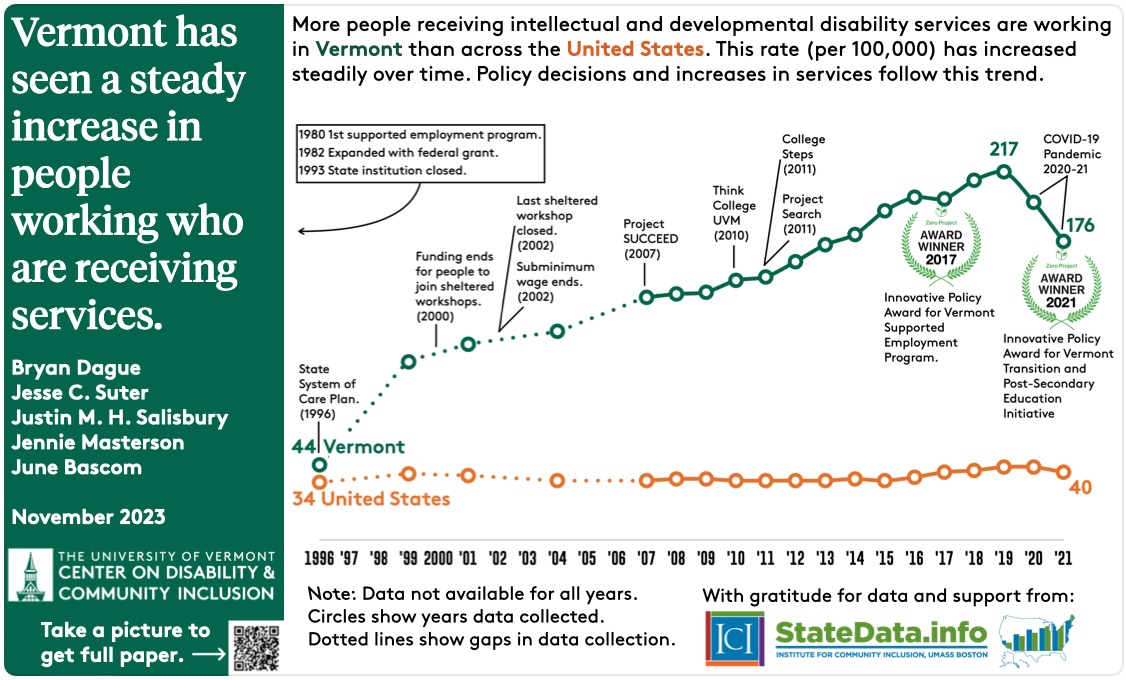Purpose of this brief
The purpose of this data brief is to share the history and trends of employment for Vermonters with intellectual and developmental disabilities.
Vermont has received national and international attention because disability-based subminimum wages and sheltered workshops were eliminated more than two decades ago. Because Vermont is regarded as an example for making such a transition, it is critical to understand the data and historical context.
Some advocates for keeping disability-based subminimum wages have reported that supported employment has not benefited people with disabilities in Vermont and other states that prioritize supported employment. For example, in testimony to the Minnesota legislature, one advocate referred to the employment of Vermonters with disabilities as "deeply disturbing", stating: "In Vermont, there are now fewer developmentally disabled adults in supported employment than in 2002, when employment workshops closed" (Testimony Before the Senate Committee on Human Services, 2023).
This assertion does not align with what has happened in Vermont.


